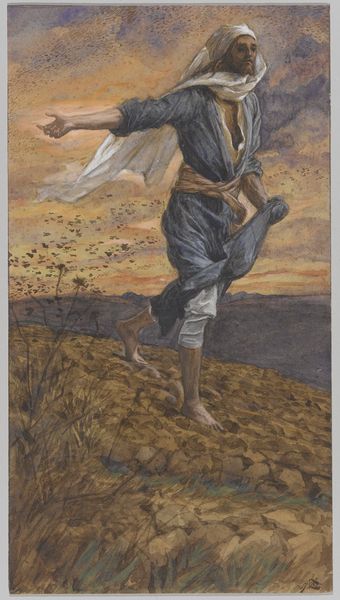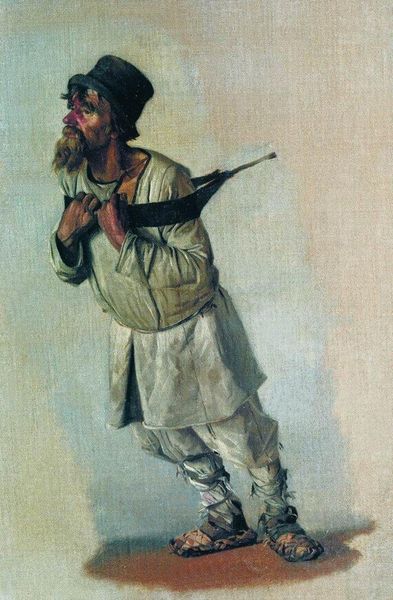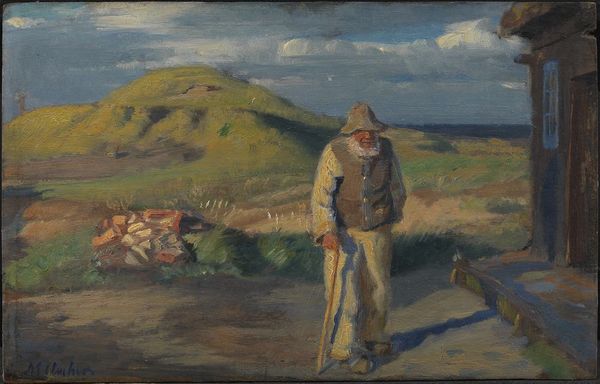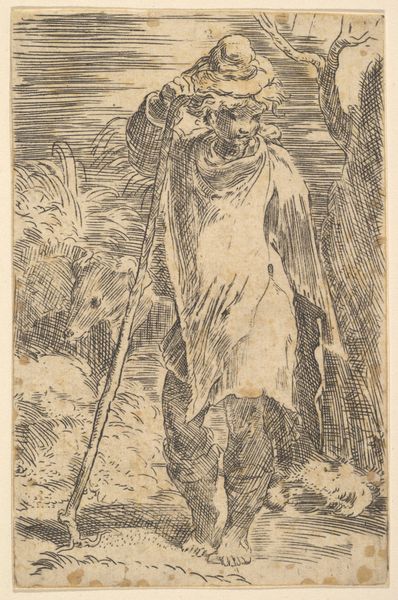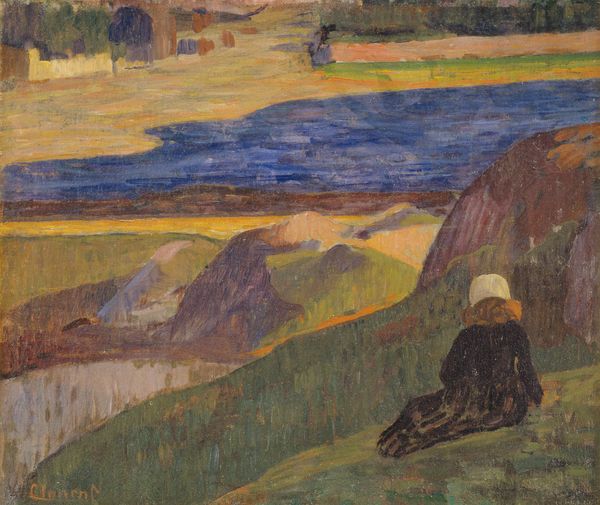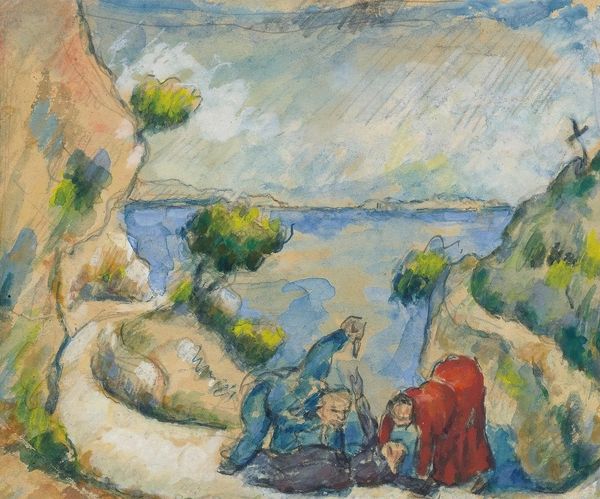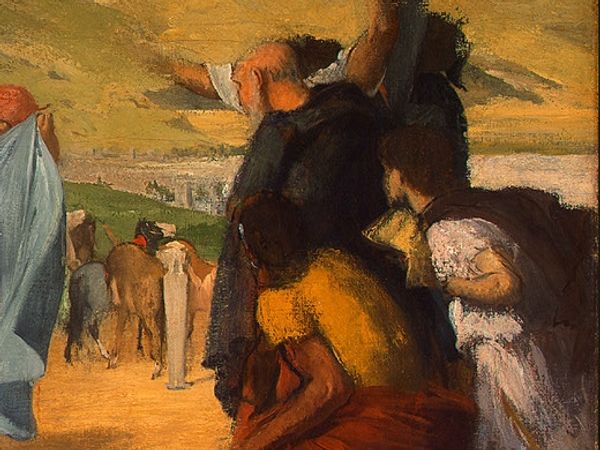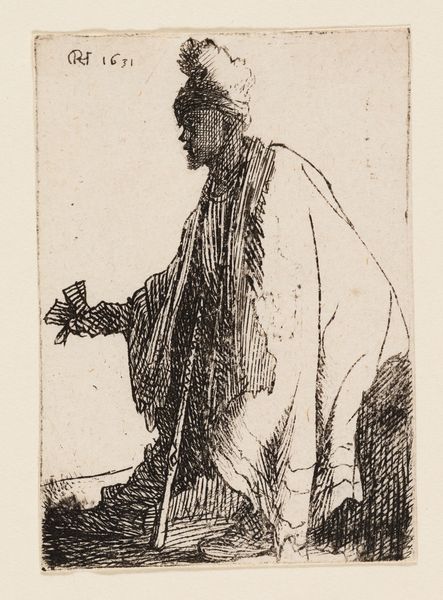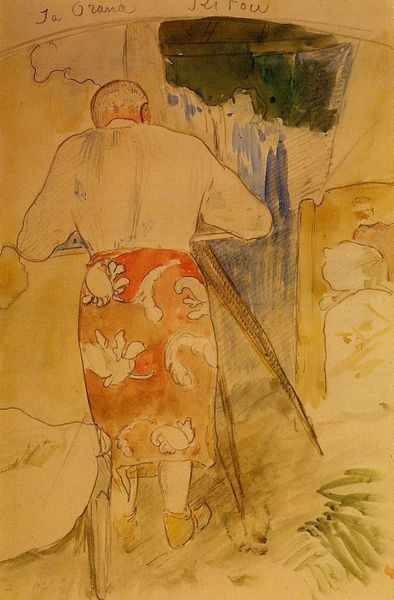
oil-paint
#
portrait
#
oil-paint
#
landscape
#
oil painting
#
symbolism
#
portrait art
#
fine art portrait
#
christ
Dimensions: 104 x 85 cm
Copyright: Public domain
Curator: This is Ferdinand Hodler's 1910 oil painting, Ahasver. Editor: It strikes me as intensely solitary. The figure's downward gaze, the subdued palette—it evokes a feeling of weary wandering. Curator: Hodler was a master of symbolism. Ahasver, or the Wandering Jew, is a figure from Christian folklore cursed to walk the earth until the Second Coming. The image speaks of endless exile, and carries so much psychological weight. Editor: The landscape seems almost incidental, a backdrop for this introspective figure. The composition guides our eyes downward, mirroring his dejection. Notice how the planes flatten towards the horizon, diminishing any sense of hope or depth. Curator: Indeed. And the staff becomes a crutch—symbolizing not just physical support but also the weight of time, a heavy burden of accumulated ages. Editor: You're right to call attention to that weightiness. Hodler uses a restricted color scheme—browns, greys, and muted yellows—to reinforce this feeling of heaviness and melancholy. And what about those two stark, nearly bare trees in the corner, are those more figures adding to the solitude of the Wanderer? Curator: Undoubtedly! In this sense, Hodler tapped into the deep well of cultural anxiety. The figure of Ahasver reflects a fear of rootlessness and the unknown. Editor: By restricting his visual language and favoring compositional economy, Hodler enhances that feeling of bleak resignation. Curator: Ultimately, Hodler offers a visual meditation on eternity, loss, and the burdens of historical memory. Editor: The canvas resonates with an affecting visual poetry. I find that limiting the art elements brings into focus all the more clearly that emotional expression you speak of. A beautiful testament to enduring power through careful constraint.
Comments
No comments
Be the first to comment and join the conversation on the ultimate creative platform.
